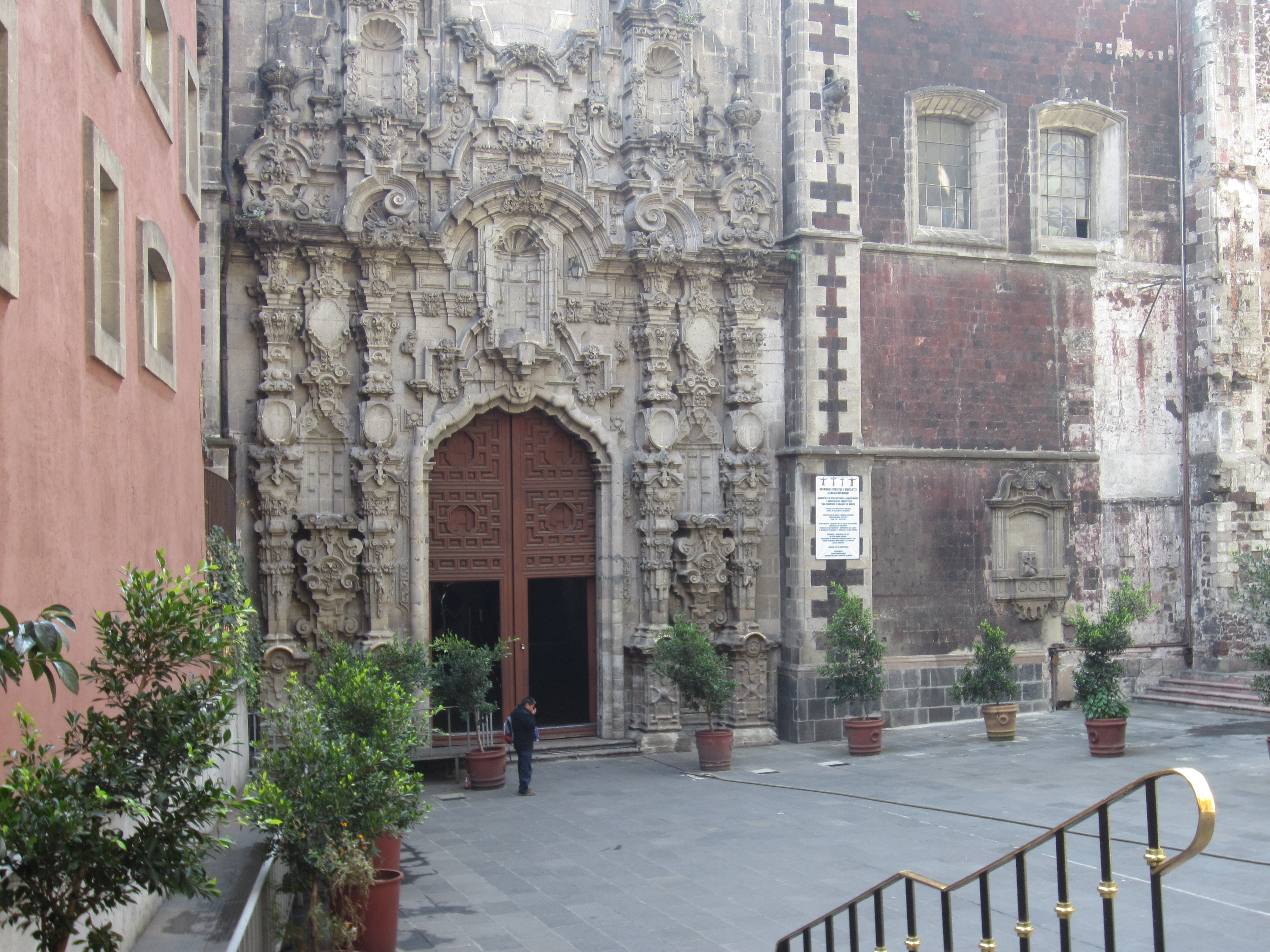
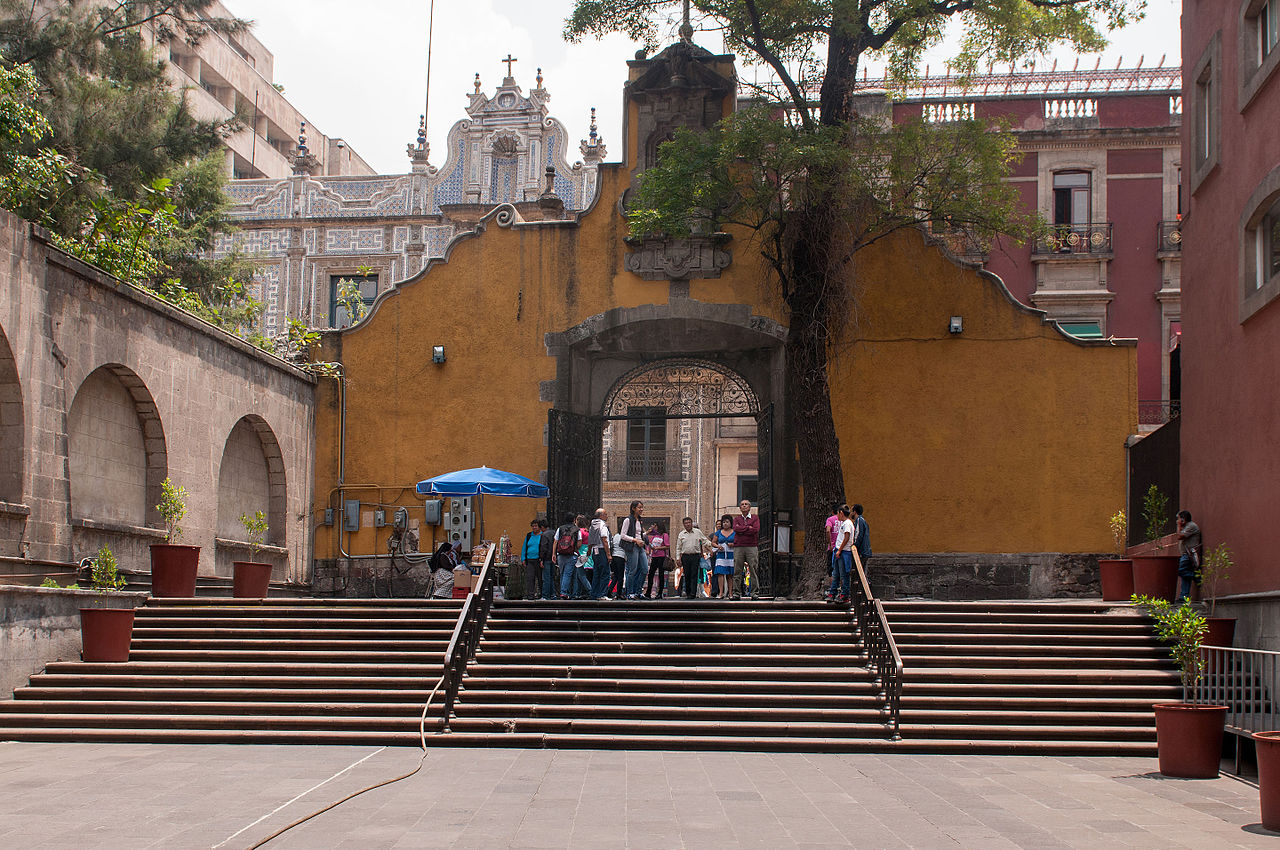
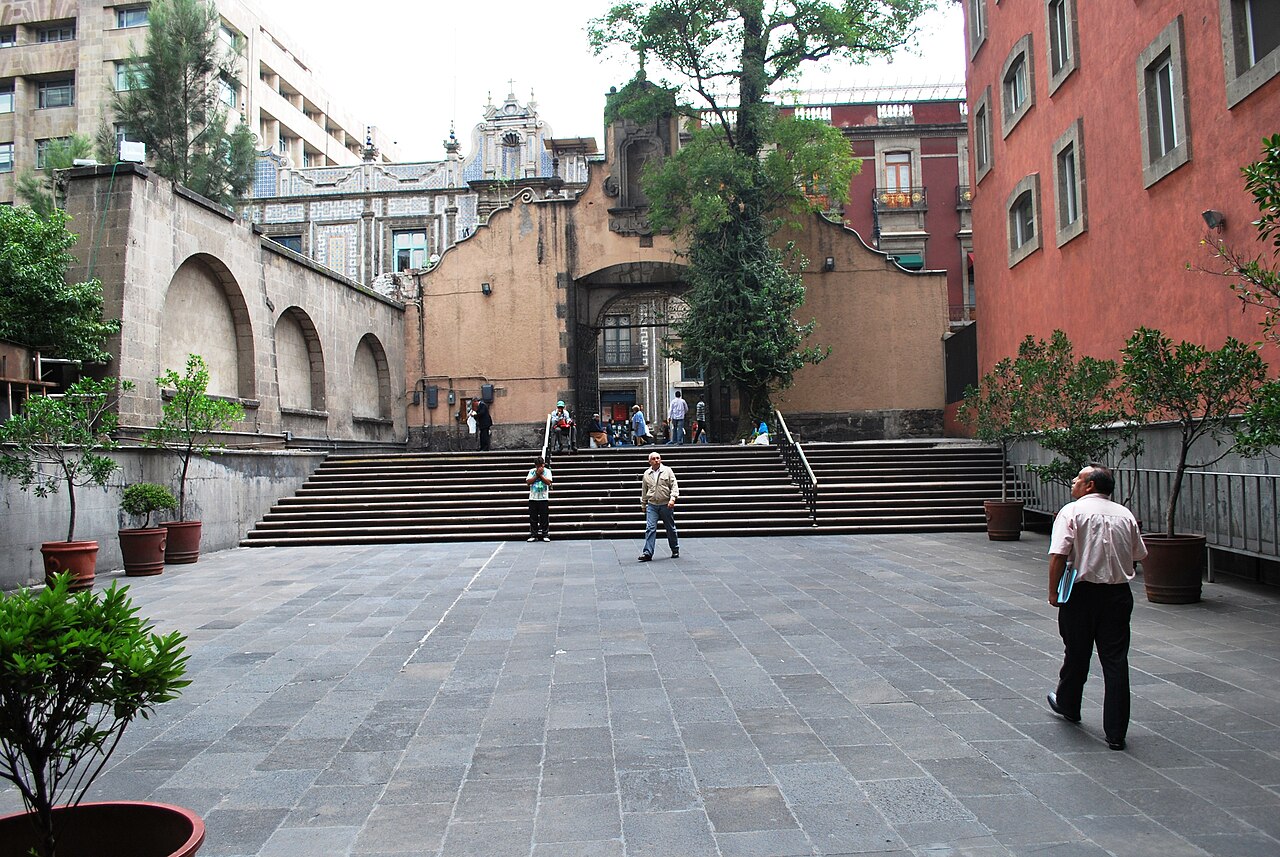
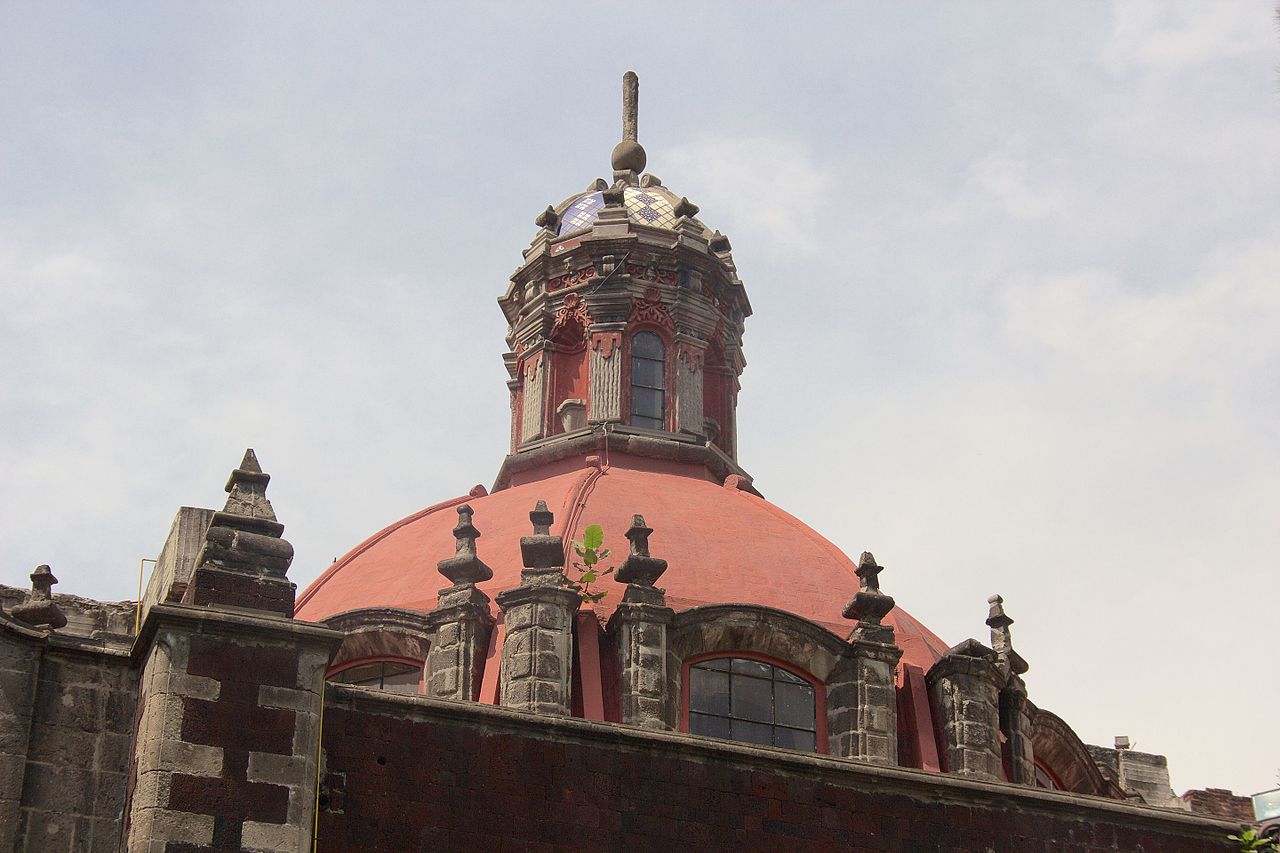
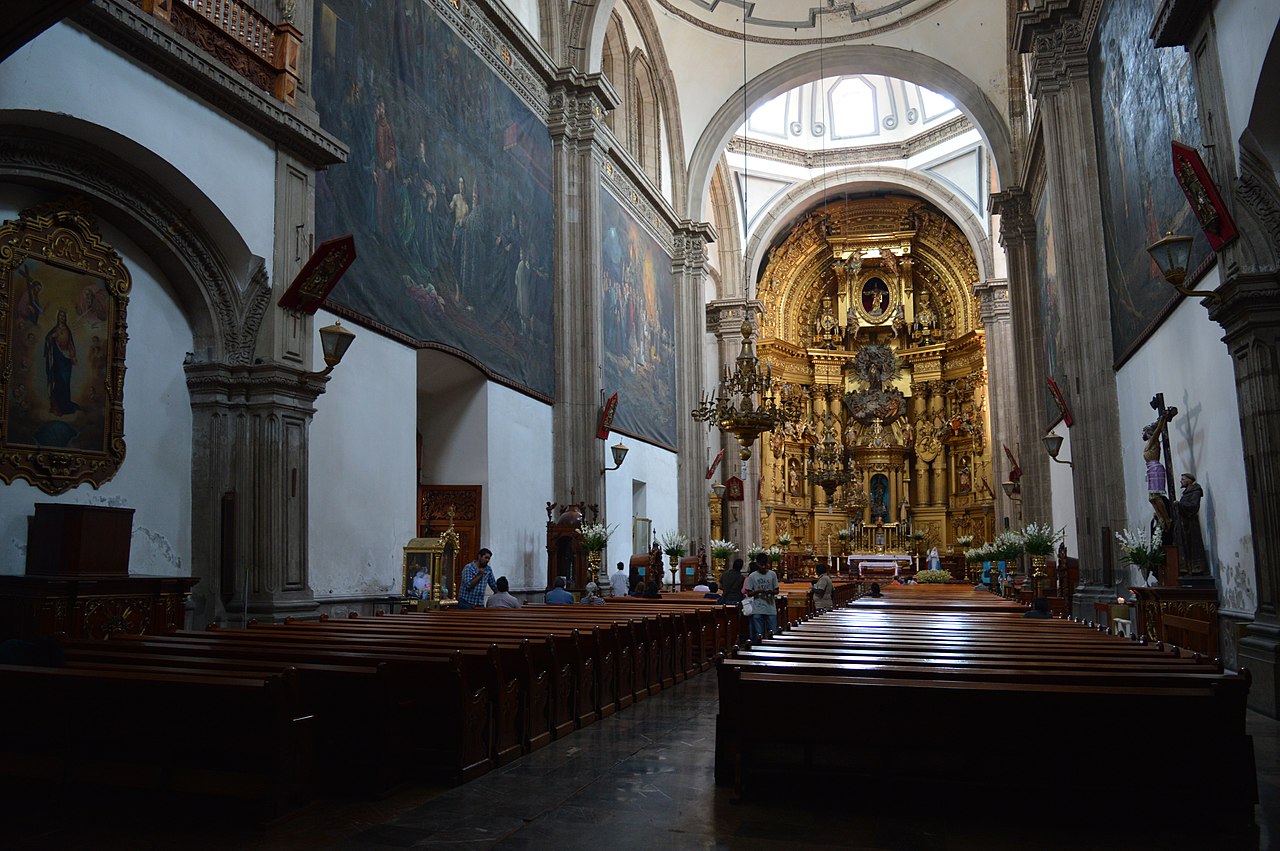
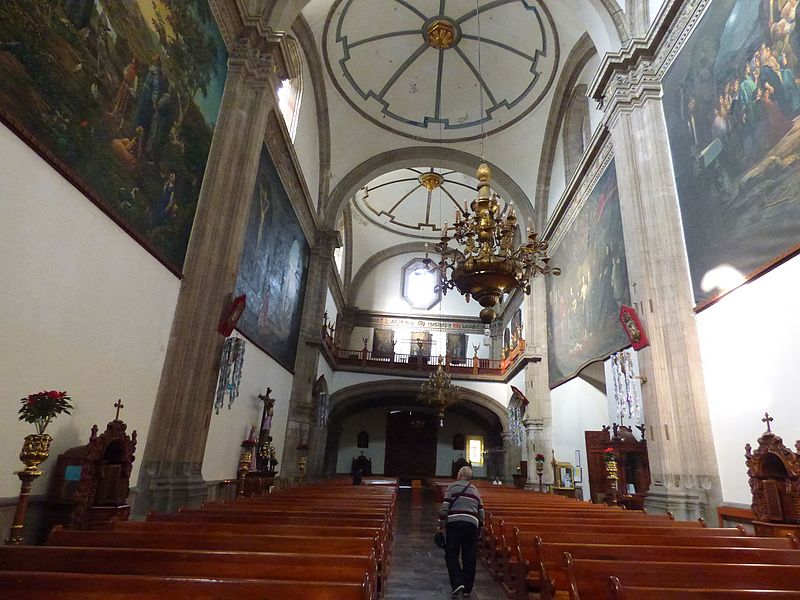
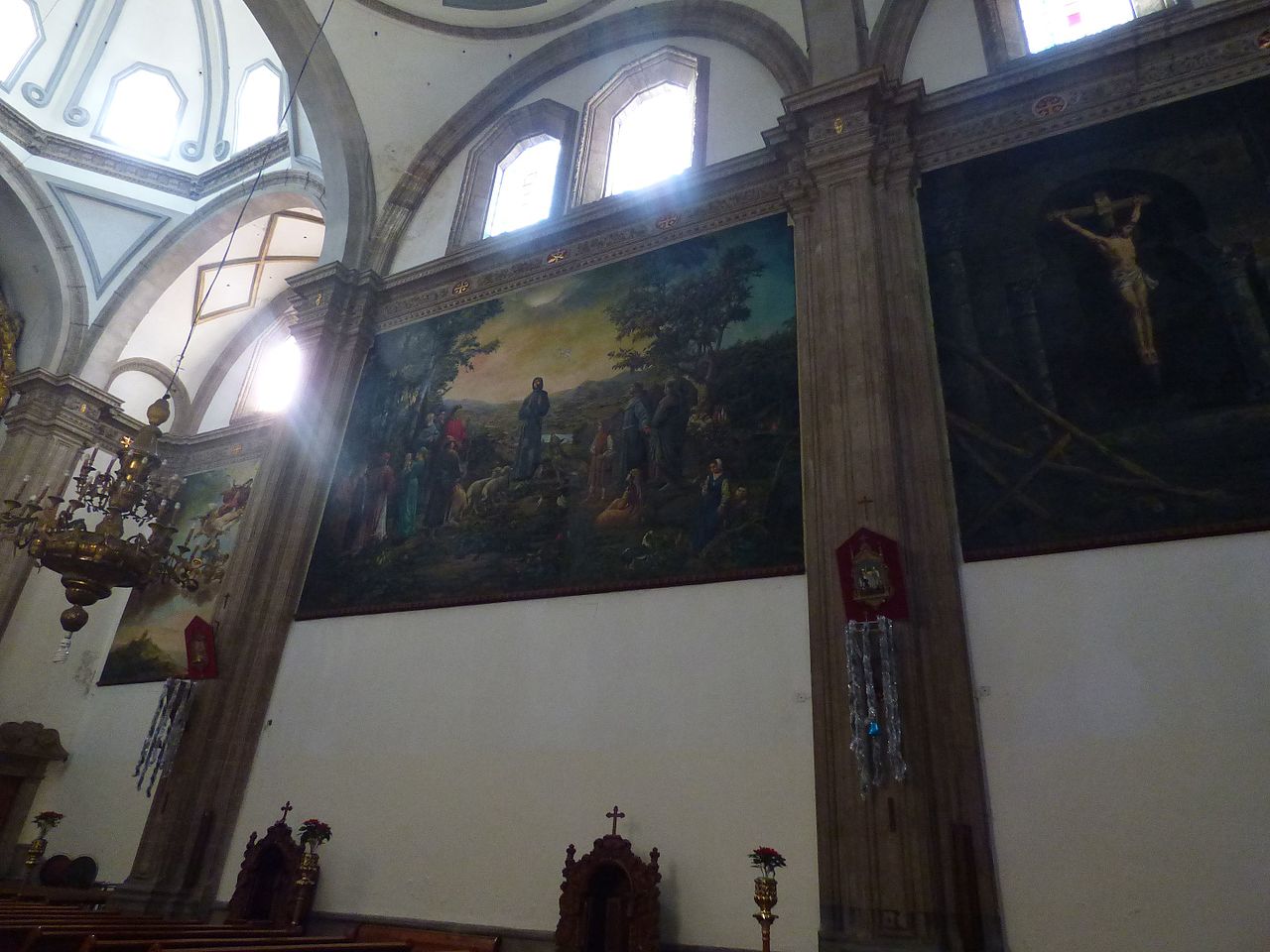
El Templo y Monasterio de San Francisco, en la calle Madero, fue uno de los primeros y más poderosos monasterios franciscanos de la Ciudad. El sitio ocupa los antiguos jardines zoológicos de Moctezuma II, y albergó a los primeros 12 frailes franciscanos que llegaron a la Nueva España.
En su apogeo, el enorme complejo lo ocupaba todo en la zona. Incluía la primera y más importante escuela para indígenas, y otras múltiples estructuras. Hoy en día, sólo queda la iglesia, aunque la iglesia metodista de la calle Gante y las panaderías de la 16 de Septiembre formaron parte del antiguo complejo. El Templo de San Felipe de Jesús ocupa un terreno donde se demolió una de las capillas del complejo. Ese templo data de finales del siglo XIX.
La esquina suroeste del complejo era la Capilla de San Antonio. Hoy alberga la librería del Fondo de Cultura Económica (FCE), en la esquina de la calle Venustiano Carranza. Eso explica la cúpula más distintiva del Eje Central. La iglesia que vemos hoy es en realidad la tercera que se construyó en este terreno, y data de 1710 a 1716. La entrada y la fachada que se ven desde la calle Madero eran la entrada a la capilla de Balvanera. La entrada principal de la iglesia está bloqueada por una construcción en la calle Gante, al este. Pero todavía se puede entrar a través de la capilla lateral. El interior, y sobre todo el retablo, son, como mínimo, espectaculares. La fachada de la capilla data de 1766.
El atrio del Templo y Monasterio de San Francisco, en realidad el atrio de la Capilla de Balvanera, es un lugar frecuente de eventos y exposiciones que se desbordan desde la siempre concurrida Avenida Madero.
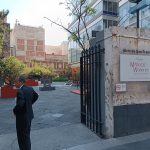 En la actual esquina de Eje Central y Madero existió la “Casa de las Fieras”, un espacio para preservar especies animales necesarias para los rituales y el disfrute del Tlatoani. En ese espacio se fundó San Francisco el “nuevo” o “grande” de México, un conjunto arquitectónico con varios claustros, huerta, templo, capillas y atrio; ocupaba el espacio delimitado por las calles de Madero al norte, Eje Central Lázaro Cárdenas al poniente, fray Pedro de Gante al oriente y Venustiano Carranza al sur.
El conjunto fue desapareciendo a partir de la segunda mitad del siglo XIX, cayeron las celdas, los oratorios, las capillas, se vendió el terreno a particulares y se convirtieron en diferentes predios. Hoy sobreviven tres capillas, un claustro, el atrio y el templo conventual, pero sin su fachada principal. El viejo atrio funciona ahora como espacio de exhibiciones temporales.
En la actual esquina de Eje Central y Madero existió la “Casa de las Fieras”, un espacio para preservar especies animales necesarias para los rituales y el disfrute del Tlatoani. En ese espacio se fundó San Francisco el “nuevo” o “grande” de México, un conjunto arquitectónico con varios claustros, huerta, templo, capillas y atrio; ocupaba el espacio delimitado por las calles de Madero al norte, Eje Central Lázaro Cárdenas al poniente, fray Pedro de Gante al oriente y Venustiano Carranza al sur.
El conjunto fue desapareciendo a partir de la segunda mitad del siglo XIX, cayeron las celdas, los oratorios, las capillas, se vendió el terreno a particulares y se convirtieron en diferentes predios. Hoy sobreviven tres capillas, un claustro, el atrio y el templo conventual, pero sin su fachada principal. El viejo atrio funciona ahora como espacio de exhibiciones temporales.
Ruta del Corazón de México: Alameda - Madero
< < Torre Latinoamericana | Casa de los Azulejos > >
Proyecto “Corredor de Cultura Digital”.
Nombre de la investigación: Investigación Centro Histórico, Monumentos, Edificios y Puntos de Interés (2023)
Dirección de investigación y diseño de Rutas: Acércate al Centro A.C. Guadalupe Gómez Collada
Coordinación e investigación histórica: Fideicomiso del Centro histórico Dir. Maestra Loredana Montes
 55 5521 7331
55 5521 7331
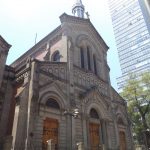
Cercano a 0.04 kms.
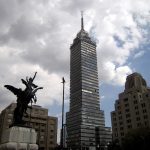
Cercano a 0.06 kms.
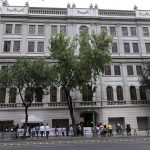
Cercano a 0.06 kms.

Uno de los lugares más importantes para ver obras de arte de la época colonial.

Bellas Artes ha sido durante mucho tiempo un símbolo icónico de la cultura, el arte y las artes escénicas de la Ciudad de México.

Una de las contribuciones más duraderas de Pedro de Arrieta a la apariencia de la ciudad.
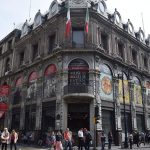
Uno de los museos más eclécticos, en casa en uno de los edificios más dinámicos de finales del siglo XIX.
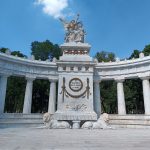
El monumento a Benito Juárez es uno de los puntos de interés más destacados de la Alameda Central.